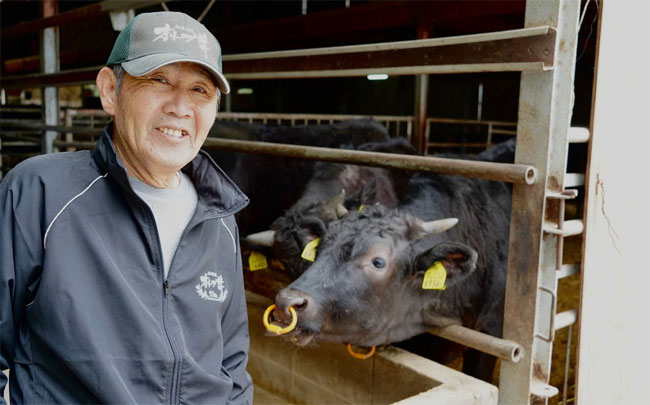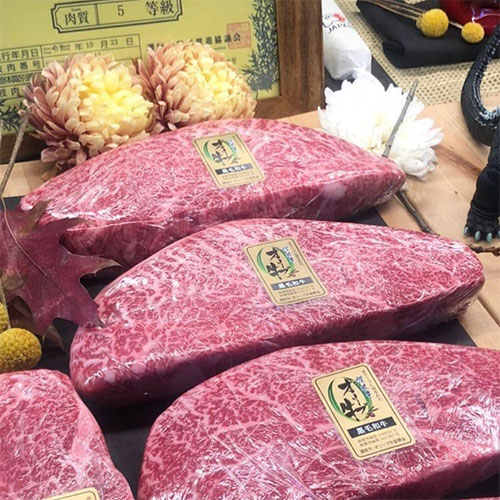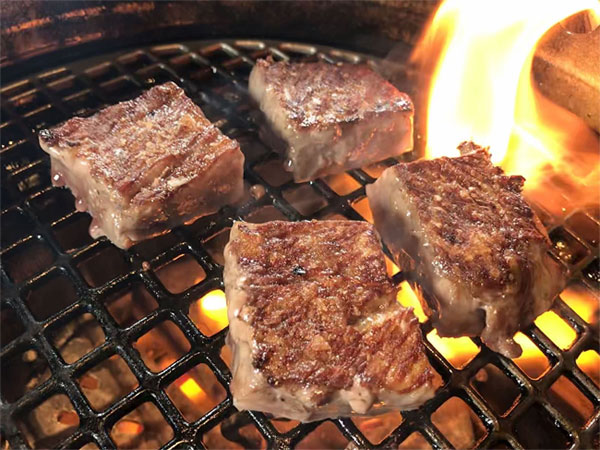With only about 2,200 Wagyu cattle raised under a special regimen and a limited number slaughtered each month, Olive Wagyu is considered the rarest beef in the world.

Premium Olive Wagyu Beef. (Image: A5meats.com).
According to Oddity Central, the emergence of Olive Wagyu beef is closely tied to the history of Shodoshima Island in Kagawa Prefecture, Japan. Shodoshima is also known as the “Olive Island” because it is a famous olive-growing region in the “Land of Cherry Blossoms.” The Mediterranean-like climate of Shodoshima is ideal for olive cultivation, and it was one of the first places in Japan to successfully harvest olives.
Like many other regions across Japan, the people of Shodoshima have raised Wagyu cattle since the 8th century for transporting goods and farming, thanks to their abundant energy reserves. Without Masaki Ishii, a local farmer, Wagyu cattle on Shodoshima would be just like those in other regions.

Mr. Masaki Ishii. (Image: Tokyo Life).
Mr. Masaki noticed that the discarded olives on the island were a tremendous waste, with tons of olives thrown away each year after being pressed for oil, despite their high nutritional value. Therefore, he thought there must be a way to utilize this fruit effectively. He tried feeding the cattle with olives, but it was a terrible idea. The cattle refused to eat them because of the bitterness and strange shape of the fruit. However, Masaki did not abandon his plan. Instead, he continued to seek ways to transform olives into a valuable, tasty feed for the cattle.
Masaki roasted the harvested olives at moderate temperatures, then dried and pressed them to create a type of natural sugar. The Wagyu cattle were immediately attracted to this new sweetness. He did not expect that his surprising success would not only create a new feed for livestock but also be regarded as a revolution in the Olive Wagyu beef production industry in Shodoshima.

Olive Wagyu has a light pink color and beautiful marbling. (Image: Instagram).
Incorporating olives into the diet of Wagyu cattle has altered the flavor of the meat, making it richer, more tender, and tastier. When tasting Olive Wagyu beef, diners feel as if they are eating chocolate beef, with the meat melting smoothly in their mouths.
Moreover, olives not only enhance the flavor of the meat but also change its appearance. Olive Wagyu beef is light pink and has a sheen due to the presence of unsaturated fats. It features fine white marbling resembling marble running through the meat.
Some nutrition experts suggest that due to the high oleic acid content in olives, Olive Wagyu beef is considered one of the healthier fat sources, better than conventionally raised Wagyu beef.

Olive Wagyu beef on the grill. (Image: CNBC).
It is undeniable that Olive Wagyu beef is exquisite, but unfortunately, very few people have had the chance to taste this delicacy. Due to the extremely limited number of cattle—only about 2,200 Wagyu raised on an olive diet globally—it is challenging to enjoy Olive Wagyu in Japan, let alone the rest of the world. Olive Wagyu is said to be so rare that many restaurant owners in Japan have never even heard of it.
This scarcity makes the price of Olive Wagyu beef quite steep. Crowd Cow, the only company distributing Olive Wagyu beef in the U.S., sells it for $240 per piece. In a restaurant, if you can find it on the menu, the dish will cost around $500 per piece.

















































